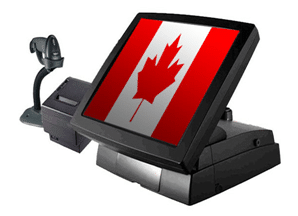
1- Your Tax Balance Usually Goes Like This:
– Deductions
Net income
– Addition deductions
Taxable income
Federal tax (apply matching tax rates and brackets)
– Non-refundable tax credit
Net federal tax
+ Provincial tax
Balance owing/refund claimed
If you are self-employed, you are also required to add your CPP to your self-employed income.
But because of these tax credits, you may not have to pay tax or even get tax refund this year.
2- What Is The Difference Between Deductions And Credits?
- Deductions reduce your taxable income, which decreases federal tax.
If you get $1000 tax deduction, it is usually not worth exactly $1000 to you. You have to apply tax rates and brackets on this $1000 deduction, along with other taxable income and deductions.
- Credits directly reduce taxes that you are supposed to pay.
For example, if you get $100 tax credit such as childcare, the $100 is worth exactly $100 to you.
Taxable Rates And Brackets:
Different amount of taxable income could be fallen into different brackets with different rates.
3-
Some General Tax Credits That Are Probably Beneficial To You
Basic Federal Credit
There is a basic federal tax credit that everyone can claim! The amount varies every year. In 2020, the maximum amount of basic personal amount increases to $13,229, so the basic federal tax credit increases to $1,984.35 ($13,229*15%).
Spousal/Partner Tax Credit
For married people, you can also claim a tax credit of $1,844.70 if your spouse or common-law partner’s income is less than $12,298 (in 2020).
Notice that some eligible tax credits can be transferred between spouses such as charitable donations, medical. You may want to take advantage of this benefit where you have a choice in terms of which spouse will claim certain credit since credits may be worth slightly more to higher-income spouse in some province (i.e., Ontario)
4- Child Care Expense
There are some special rules for child care expense deductions. You may be able to claim child care expenses for your child or your spouse’s child. The child should be under 16 and different age group can claim different amount of deductions.
In 2020, families could receive up to:
| Annual limit per child | |
| $6,000 per child | child under the age of seven |
| $3,750 per child | child between the ages of seven and 16 |
| $8,250 per child | child with a severe disability |
The amount of expenses that can be claimed is the least of:
Here is an example:
Alison and Barry are married and have two children under the age of seven. Alison earns $100,000 and Barry earns $30,000. They pay $10,000 in 2020 to a nanny who takes care of their children.
In this scenario, Barry should be the one who claim the child expense since he is the spouse with lower income. The deduction should be the least of:
- The actual amount paid: $10,000
- 2/3 of taxpayer’s earned income: 2/3*$30,000=$20,000
- Number of eligible children * annual limit 2*$6,000 = $12,000
So the deductible (the least) amount is $10,000
5- Tax Credit For Tuition Fees
To be eligible, the fees must be paid to a Canadian university/college or other institutions that are certified by Human Resources and Skills Development Canada.
Eligible tuition fees also include library fees, lab charges, books fees, etc.
The maximum amount for eligible tuition fee is $5,000 ($750 tax credit). The amount can be transferred to spouse, parent or grandparent. The unused or un-transferred amount can be carried forward indefinitely.
Scholarship and bursaries are usually tax-free. If you attend a part-time program, the exemption is  limited to the cost of tuition and other expenses.
limited to the cost of tuition and other expenses.
You can also claim tax credit on the interest paid on student loans (15%).
6 – Tax Credit For Your Medical Expenses
The threshold for medical expense is the lesser of:
- 3% of your net income
- $15,980 (worth $2,397)
For example, your net income is $50,000. You spend $3,000 on eligible medical expenses in 2020. So the eligible medical expense is $1,500 ($3,000 – 3%* $50,000). The federal tax credit you can  claim is $225 (15%*$1,500).
claim is $225 (15%*$1,500).
There is a long list of qualifying medical expenses – “Medical Expense Tax Credit” on CRA website. Please refer to it when you claim medical expenses.
Tip: it is recommended to combine all of the family’s medical expense to maximize the tax credit.
7 – Get Tax Credit On Your Political Contributions
The amount of eligible credit is associated with the amount you contributed (in 2020):
| First $423 | 75% |
| $423 – $1,410 | 50% |
| $1,410 – $3,208 | 33.33% |
If you are the first-time home buyer, the first $5,000 of purchasing expense (worth $750) can get tax credit.
Muhammad Nasrullah,CPA, CGA, LPA
Chartered Professional Accountant
Licensed Public Accountant
206A – 2365 Finch Ave. West North York, ON. M9M 2W8
Tel: (1) 416-748-0817 ext 101 Fax:(1) 416-748-6814
www.nasrullahcga.com E-mail: muhammad@nasrullahcga.com




